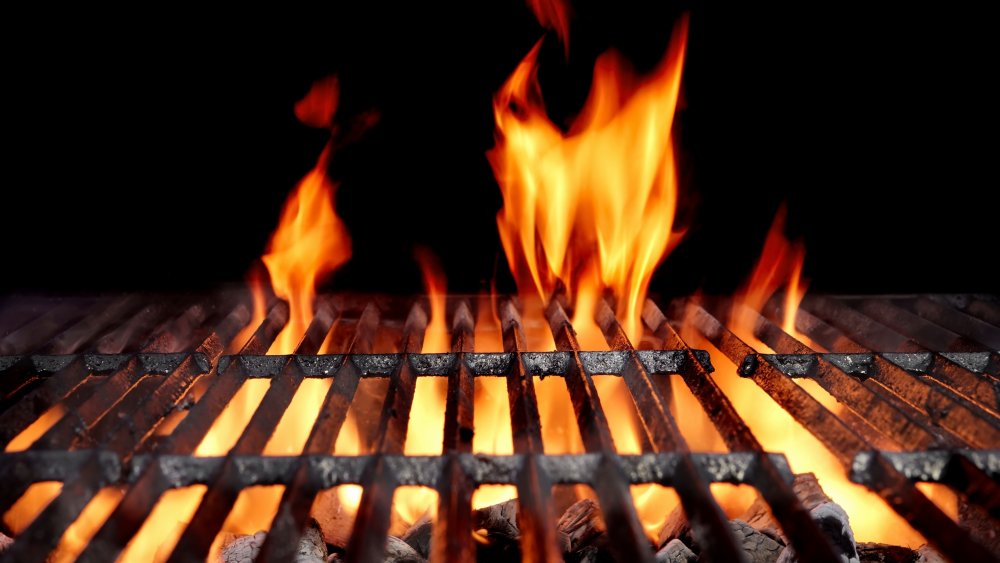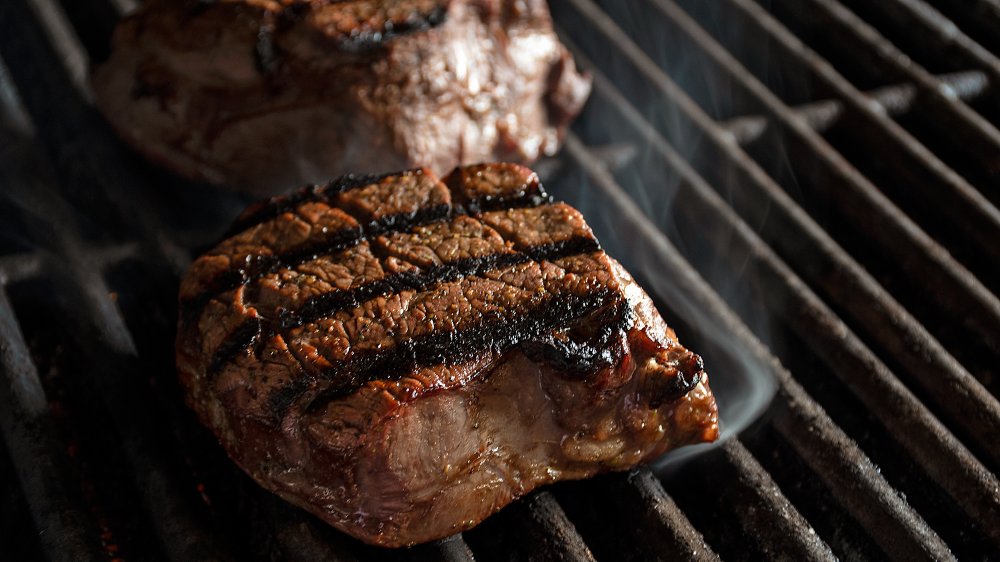What You Didn't Know About Steakhouse Grills
Among the secrets behind a steakhouse's steak, The Daily Meal simply includes, "They use infrared boilers," before commenting on the extreme heat used to cook their meats. The invocation of infrared, however, merely hides the secret of how they cook their the meat behind mystifying technology. Let's examine, then, what infrared grills do.
First, the infrared bit. As How Stuff Works explains, infrared refers to the section of the electromagnetic spectrum that includes rays with longer wavelengths that occur less frequently than those we can see as visible light, but are shorter and are more frequent than microwaves. Some of these wavelengths create heat that we can sense and apply to other objects. This means that any oven or grill gives off infrared waves, with the amount increasing as the temperature grows hotter.
As Kitchen Guru Ideas lays out, the difference is between convection cooking and conduction. Convection heats the air, which then acts as the cooking agent, which is why a convection oven is defined by its fanning agent. Conduction transfers heat energy between solid objects, such as when a steak or a burger develops grill marks due to their direct contact with the grill's racks. The heating of the racks themselves work via a convection method — hot air heats the metal bars. Infrared grills heat the bars directly, which allow for higher temperatures without the food drying out due to the hot air rising around it.
Are infrared grills viable?
But before everyone begins to buy infrared grills to produce steakhouse-worthy steaks, some may hesitate, wishing to know more about whether they could afford these devices in the medicinal as well as the economic sense. After all, infrared sounds new and daunting. As a 2010 piece in HuffPost explains, we know that microwaves, while useful, pose some health risks and in many cases alter the nutritional benefit of the food we wanted to consume. Harvard Medical School counteracts the hysteria: "The cooking method that best retains nutrients is one that cooks quickly, heats food for the shortest amount of time, and uses as little liquid as possible. Microwaving meets those criteria."
Perhaps a more understandable explanation is provided by The Spruce Eats, which points out that most of us have already used infrared cooking in our houses: toasters.
Eddie van Aken, whose website Better Grills gives in-depth reviews of various grills, admits that infrared grills are a tad more expensive than non-infrared grills. That said, the quality of cooking is better. It amounts to how much you really care about grilling. Ask yourself whether it is the type of passionate hobby for which you would go the extra mile to produce the meal you envision. If so, then it's probably worth it.

